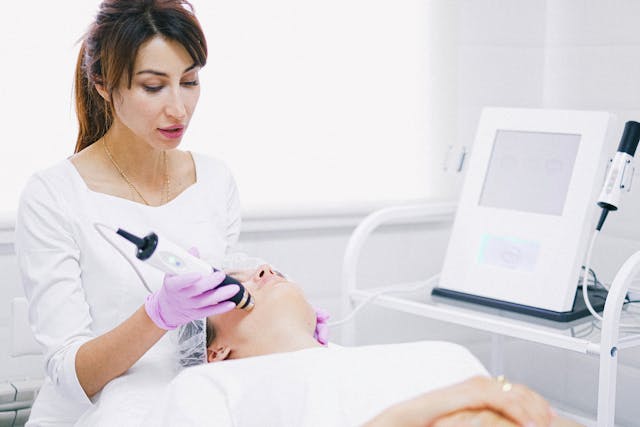The evolution of minimally invasive treatments in healthcare has introduced a transformative shift in the treatment of illnesses and health conditions. These advances in medical interventions have positive implications for patient outcomes and overall healthcare efficiency. In addition, such treatments offer a diverse array of benefits that distinguish them from traditional, more invasive procedures. The distinct advantages of noninvasive treatments span various aspects of patient care, from reduced physical trauma and enhanced safety to quicker recovery times and improved overall quality of life. Below is a more in-depth explanation of the benefits.

Smaller Incisions
One major benefit of noninvasive medical treatments lies in the minimized physical trauma experienced by patients. These procedures typically involve smaller incisions or none at all. Thyroid ablation treatment, for example, uses radio-frequency or laser energy to target and eliminate abnormal thyroid tissue without the need for surgery. A treatment of this kind allows the thyroid to be preserved. Not to mention, this treatment can often be performed on an outpatient basis, reducing hospital stays and contributing to overall patient comfort. This reduction in trauma translates to a lower risk of complications, decreased postoperative discomfort, and a smoother recovery process. Patients undergoing noninvasive treatments often report less pain and a quicker return to their normal activities compared to those subjected to traditional surgeries.
Treatments Are More Targeted
The emphasis on precision is another hallmark feature of noninvasive treatments. By specifically targeting the affected area without causing unnecessary damage to surrounding healthy tissues, these procedures enhance safety and minimize the risk of unintended consequences. Precision is particularly crucial in delicate medical interventions, where avoiding collateral damage is imperative for successful outcomes. Whether utilizing advanced imaging technologies or guided by real-time feedback, noninvasive techniques prioritize accuracy, offering a more controlled and tailored approach to patient care.
Quicker Recovery Times
Quicker recovery times stand out as a compelling advantage of noninvasive medical treatments. Patients undergoing procedures with smaller or no incisions often experience expedited healing processes, allowing them to resume their daily activities sooner. This is especially significant for individuals with busy lives or those facing time-sensitive health concerns. The reduced recovery periods not only enhance patient satisfaction but also contribute to more efficient healthcare delivery. Additionally, patients who recover quicker can free up resources and reduce the burden on both themselves and healthcare systems.
Improved Quality of Life

Beyond the physical benefits, noninvasive treatments contribute to improved overall quality of life for patients. The psychological impact of undergoing a medical procedure can be significant, and the reduced invasiveness of noninvasive treatments may alleviate anxiety and stress associated with surgery. This is especially true for those who face significant risk going under anesthesia. Patients often appreciate the diminished scarring, which enhances aesthetic outcomes and, consequently, contributes to a positive emotional and mental well-being. The holistic focus on patient comfort and satisfaction underscores the comprehensive benefits of noninvasive medical interventions.
Healthcare Is More Efficient
In addition to their impact on individual patients, noninvasive treatments contribute to broader healthcare efficiency. Shorter recovery times mean reduced hospital stays, allowing medical facilities to allocate resources more effectively and accommodate a larger volume of patients. The outpatient nature of many noninvasive procedures further optimizes healthcare delivery by minimizing the strain on hospital resources and decreasing overall healthcare costs. This efficiency is particularly pertinent in today’s fast-paced healthcare environment, where optimizing resources is essential for providing high-quality patient care. When healthcare is more efficient, healthcare professionals can provide patients with the attention they deserve.
Conclusion
Advancements in technology play a pivotal role in the expanding realm of noninvasive medical treatments. Innovations such as robotic-assisted surgery, laser therapies, and targeted drug delivery systems continue to redefine the possibilities of minimally invasive interventions. These technologies not only enhance the precision of noninvasive treatments but also open new avenues for addressing complex medical conditions. As technology continues to advance, the potential for noninvasive treatments to become even more effective and versatile in various medical specialties becomes increasingly promising. The transformative impact of noninvasive medical treatments is not just a testament to their effectiveness but also a testament to the ongoing commitment to advancing patient-centric healthcare practices.

